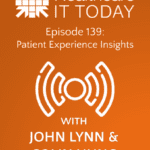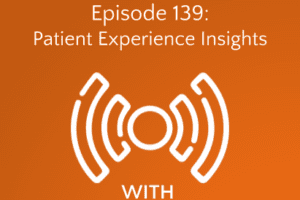There are a lot of amazing things that the cloud is capable of doing in healthcare. But as a newer technology, there are still some areas that it falls behind. So as we are looking into the cloud and possibly adding it to our organizations, we need to be looking at some additional tools that can help you better manage your cloud efforts in healthcare.
To get a starting point on what tools we need to get a better handle on the cloud in healthcare, we reached out to our wickedly smart Healthcare IT Today Community. The following is their recommendations on the necessary tools.
Vladimir Dabić, Tech Lead at Inviggo
Any Infrastructure-as-a-Service tools are very helpful for managing cloud infrastructure. This can be cloud specific tools like AWS’s CloudFormation or AWS CDK, or it can be open source tools like Terraform with AWS/GCP/Azure provider. Using IaaC with version control like git let’s you have reproducable infrastructure in a click of a button, as well as history of changes. To better handle cloud in healthcare, SaaS tools like SecureFrame can be used. SecureFrame connects to your cloud account and audits your infrastructure for chosen compliance (SOC2, HIPAA, GDPR, CCPA etc) which makes this process much faster.
Jay Ackerman, President & CEO at Reveleer
To better handle cloud in healthcare, several tools are needed. These tools collectively enable healthcare organizations to efficiently manage cloud resources, ensure security and compliance, optimize performance, and leverage advanced technologies for improved patient care and operational excellence. Some essential tools include:
- Cloud Management Platforms (CMPs): Provide a unified interface for provisioning, monitoring, and managing cloud resources
- Monitoring and Analytics: Monitor resources and applications and provide insights into performance while enabling automated responses to incidents. These can help identify and mitigate performance issues
- Security and Compliance Tools: Help ensure that cloud resources are configured according to security best practices and compliance requirements
- Cloud Compliance Management (CCM): Platforms assist in maintaining compliance with industry standards and regulations like HIPAA
- Automation and Infrastructure as Code (IaC) Tools: These can enable infrastructure provisioning through code, promoting consistency and version control
- Data Management and Backup Tools: Securely stores and retrieves data and offers scalable and durable storage
- Data Analytics and Machine Learning Tools: Support data analysis and transformation
- Encryption and Data Protection Tools: Provide built-in services for managing encryption keys and help prevent unauthorized data leakage by monitoring and protecting sensitive information
Adopting cloud technology in healthcare brings both opportunities and challenges. While cost savings, scalability, and flexibility are among the benefits, considerations for data security, compliance, and proper migration strategies are essential. Healthcare organizations should assess their unique needs and risks when choosing between public, private, or multi-cloud models. They should also invest in appropriate tools to effectively manage and secure their cloud infrastructure.
Paul Brient, Chief Product Officer at athenahealth
In healthcare IT, the term “cloud” can encompass a range of solutions, but simply being “in the cloud” doesn’t automatically translate to seamless interoperability, effortless and cost-free software updates, or anytime, anywhere access. These aspects are critical, especially as healthcare moves toward a value-based care model where connectivity is essential for delivering high-quality patient care and closing care gaps.
Said another way, simply moving your existing on-premises technology to the cloud doesn’t unlock the full potential of cloud technology. The full benefits of cloud technology come when you transition to a true multi-tenant, single-instance SaaS solution. These systems are more flexible, more scalable, and lend themselves better to interoperability. When all users are on the same instance, updates are seamless, and importantly, integrations for interoperability only need to be built once for all customers. With on-premises technology that is migrated to the cloud, you still must manage upgrades and build point-to-point integrations.
True SaaS solutions also allow practices to harness the “network effect” of being part of a larger system, where the system can learn from all the usage of the system to benefit all users. So, for example, if a payer changes their rules and starts denying claims, this learning can be quickly incorporated to avoid denials across the network. Or if a care gap is closed for a patient at one practice, all other practices caring for that patient can see this immediately.
Finally, with the dramatic increase in AI capabilities, having all users on a common system allows for an extremely powerful AI training and deployment environment. AI models can learn from the work being done across all practices to streamline administrative tasks and greatly improve the user experience.
Doug Parent, CEO at RingRx
At RingRx, we utilize a combination of cloud infrastructure management tools to ensure efficient and secure operations. These tools provide centralized control over cloud resources, enabling us to monitor, manage, and optimize our cloud infrastructure. Additionally, we leverage specialized healthcare technology solutions for compliance, security, and patient communication, ensuring seamless integration within our cloud environment. To better handle cloud in healthcare, dedicated tools for data encryption, access control, audit logging, and HIPAA compliance verification are essential to maintaining the highest standards of data protection and privacy.
Sundar Shenbagam, Chief Technology Officer at Edifecs
Instead of focusing on tools, I would focus on approaches. The reason is every major cloud vendor provides a plethora of tools to better understand usage, monitor details, and APIs/tools to automate solutions. The first approach is to take advantage of the tooling and capability available on cloud, like Kubernetes containers, to manage workload and then try to manage it outside of them which results in big maintenance headaches. We need to take advantage of such tools, then spend time setting up monitoring and the alerting framework using cloud vendor tools and use APIs and tools to resolve resource issues automatically by predicting upcoming failures. Never forget the human angle since DevOps engineers are the ones needed to act on resolving issues when automation fails.
Matt Donahue, Chief Technology Officer at CloudWave
Managing cloud infrastructure in healthcare requires a range of tools. These include tools to gain visibility into the usage, consumption, and performance of cloud resources. Financial analysis tools are crucial for tracking and optimizing cloud spending, as unexpected costs can arise. Security tools, including user access provisioning and audit logs, are also essential to protect patient data and ensure regulatory compliance. Additionally, backup and recovery solutions in the cloud are important for data protection and disaster recovery, as they often offer cost-effective options compared to traditional backup systems.
Ajaya Loya, Senior Engineering Manager – Cloud Infrastructure & Security Team at LeanTaaS
Employing Infrastructure as Code (IAC), applying containerization strategies for hosting applications, ensuring visibility into cloud spending, and utilizing Cloud Security Posture Management (CSPM) tools for identifying misconfigurations are essential approaches to efficiently oversee cloud infrastructure, bolster security, and expedite innovation while enhancing the adaptability of change cycles.
So many great ideas here! Thank you to everyone who took the time to submit your expertise and thank you to everyone reading this article! We could not do this without your support. Let us know what tools you think are necessary to have a better handle on cloud in healthcare either in the comments down below or on social media. We’d love to hear from you!













